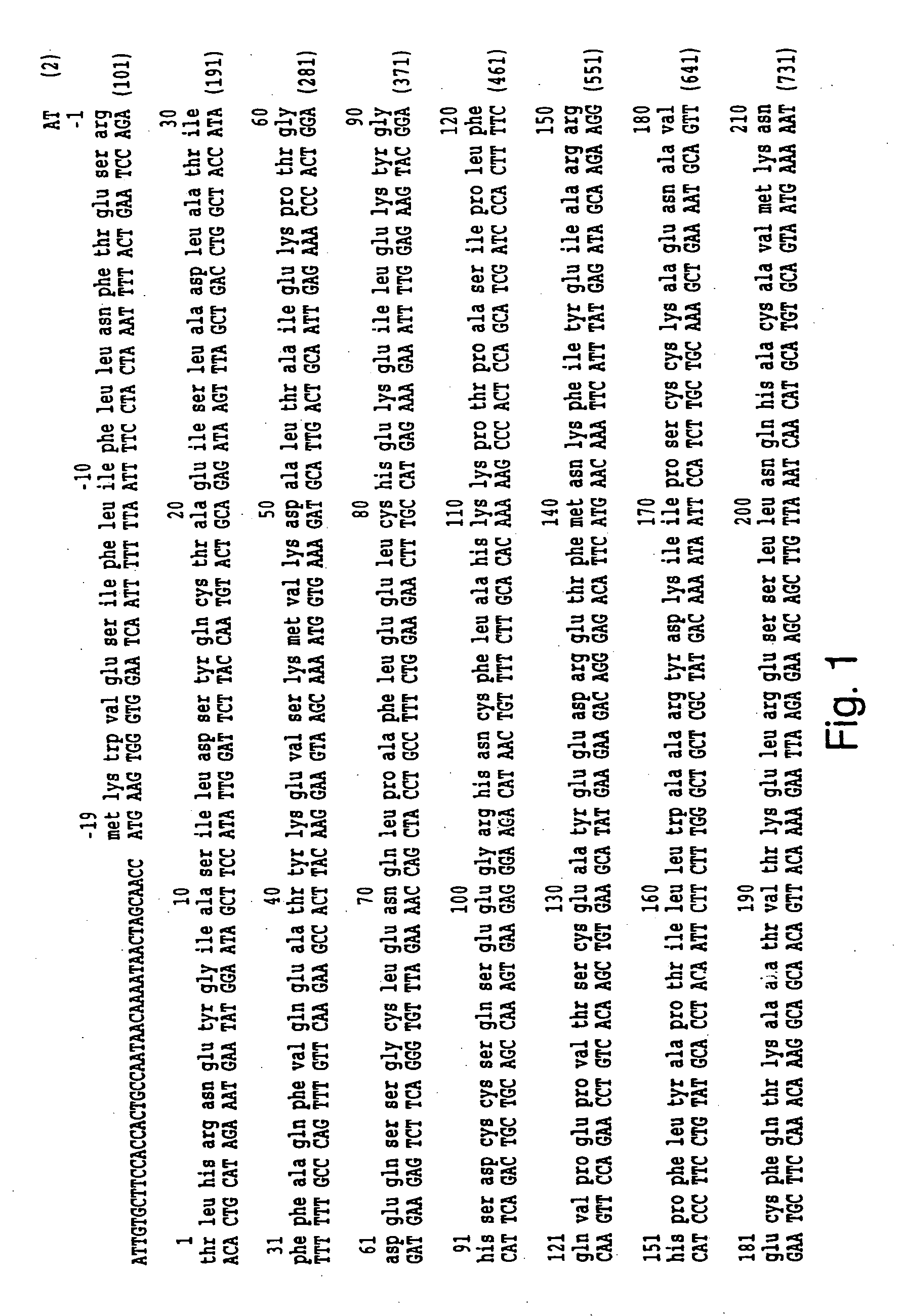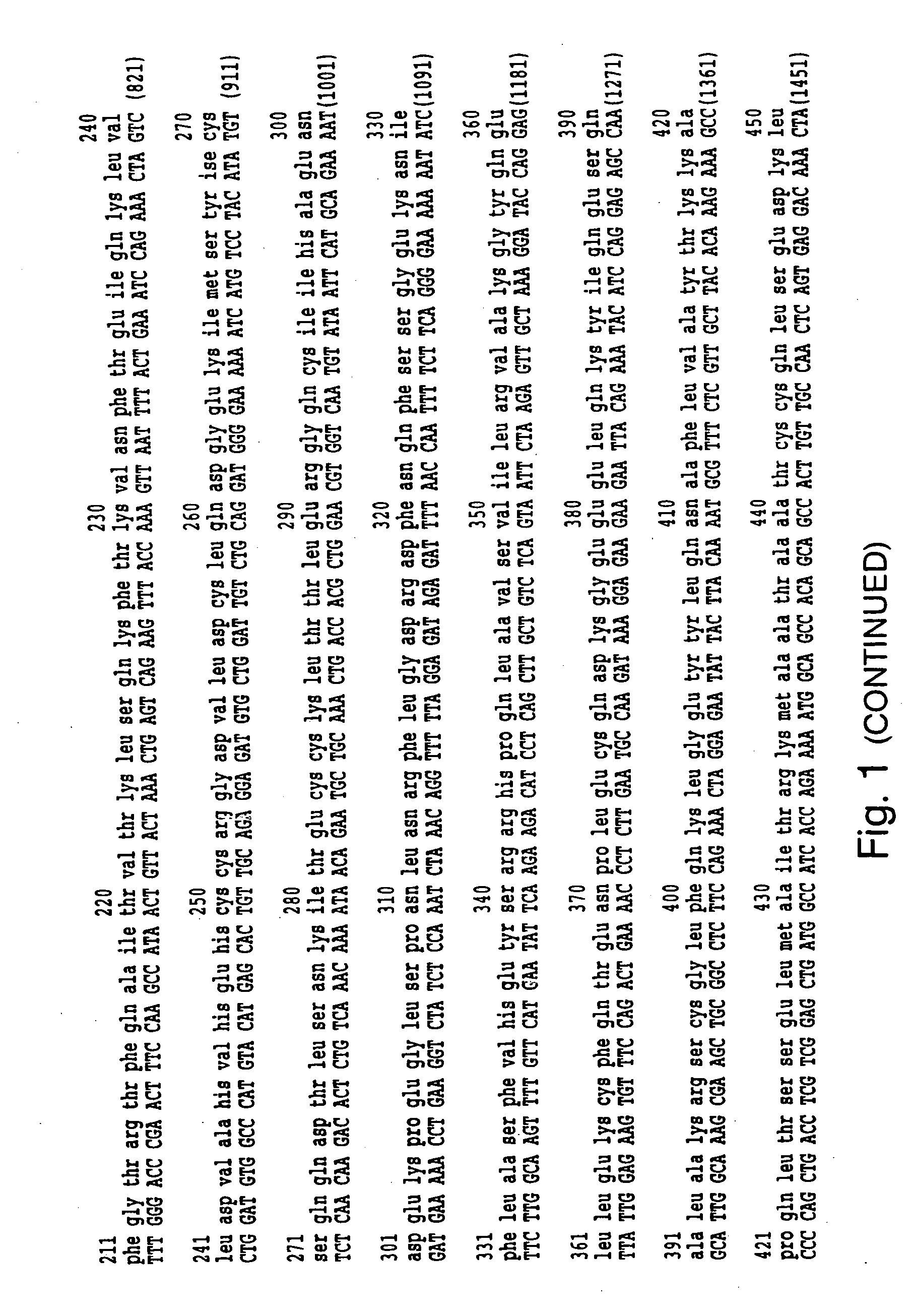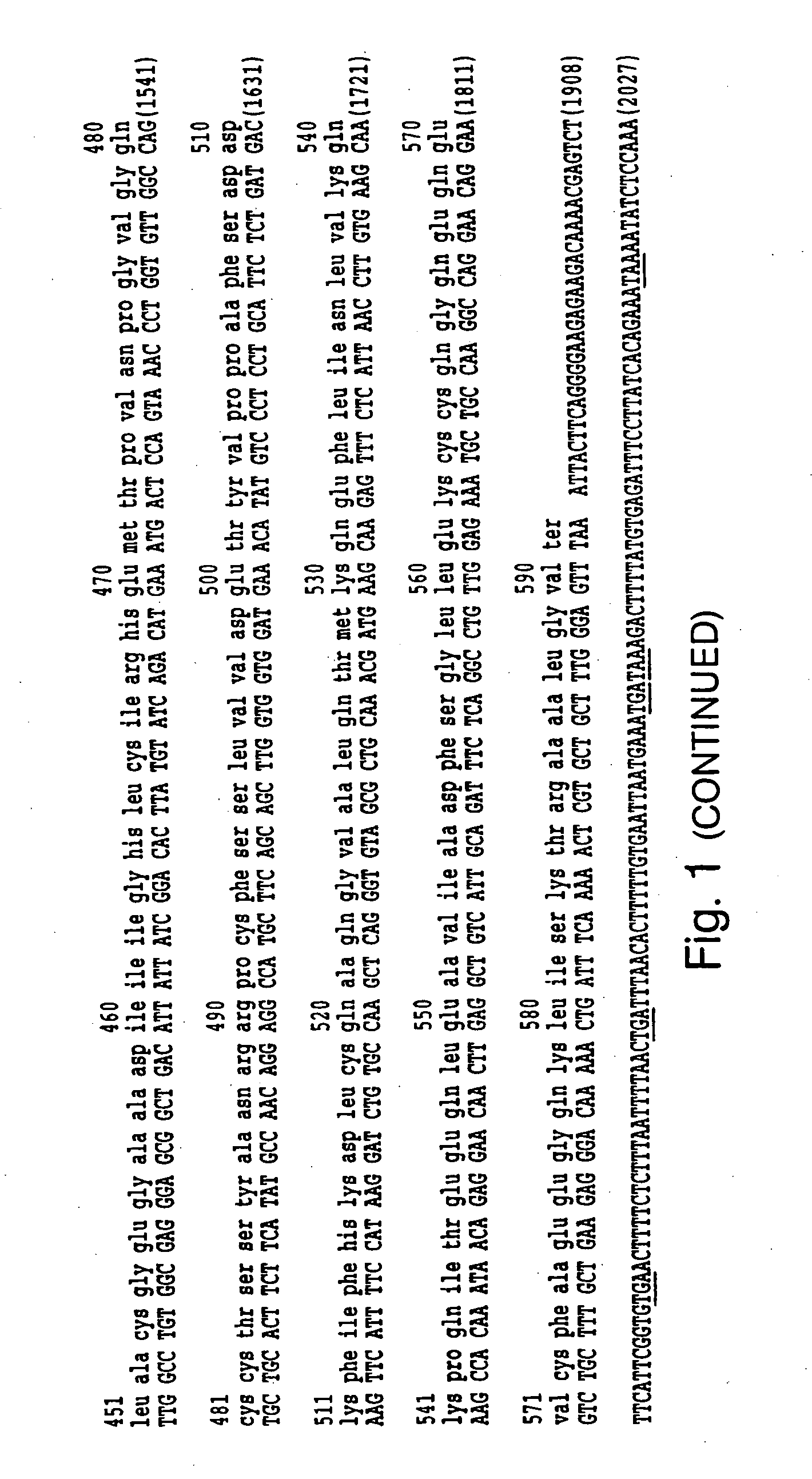Use of rAFP inhibit or prevent apoptosis
a technology of apoptosis and rafp, which is applied in the direction of applications, peptide/protein ingredients, peptide sources, etc., can solve the problems of apoptosis often occurring so quickly, cell swelling and then rupture, and disturbed osmotic pressur
- Summary
- Abstract
- Description
- Claims
- Application Information
AI Technical Summary
Problems solved by technology
Method used
Image
Examples
Embodiment Construction
Production of Recombinant Human Alpha-fetoprotein
[0009] Recombinant AFP can be produced in any standard recombinant protein production system, including prokaryotic cells such as E. coli, and eukaryotic systems such as yeast, mammalian (e.g., CHO cells) and insect cells. Prokaryotic production of rHuAFP is described in Murgita U.S. Pat. No. 5,384,250, hereby incorporated by reference.
[0010] The methods of the invention can also employ biologically active fragments of rHuAFP. A biologically active fragment of rHuAFP is one that possesses at least one of the following activities: (a) directs a specific interaction with a target cell, e.g., binds to a cell expressing a receptor that is recognized by rHuAFP (e.g., the membrane of a cancer cell such as MCF-7); or (b) halts, reduces, or inhibits apoptosis (e.g., binds to a cell surface receptor and imparts an anti-apoptosis signal). The ability of rHuAFP fragments to bind to a receptor which is recognized by rHuAFP can be tested using ...
PUM
 Login to View More
Login to View More Abstract
Description
Claims
Application Information
 Login to View More
Login to View More - R&D
- Intellectual Property
- Life Sciences
- Materials
- Tech Scout
- Unparalleled Data Quality
- Higher Quality Content
- 60% Fewer Hallucinations
Browse by: Latest US Patents, China's latest patents, Technical Efficacy Thesaurus, Application Domain, Technology Topic, Popular Technical Reports.
© 2025 PatSnap. All rights reserved.Legal|Privacy policy|Modern Slavery Act Transparency Statement|Sitemap|About US| Contact US: help@patsnap.com



